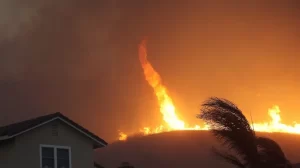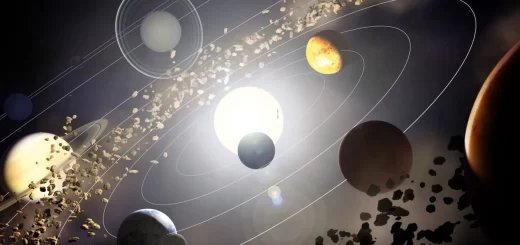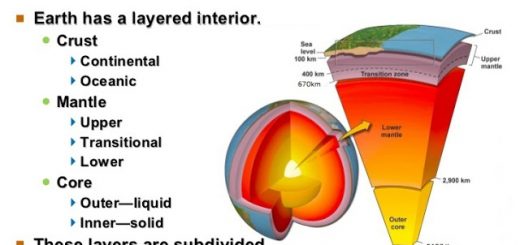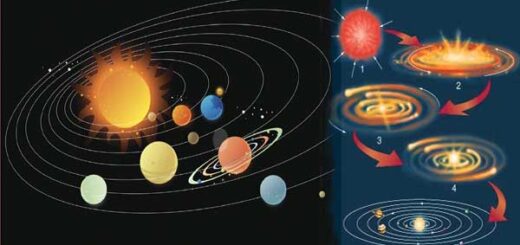Effects of Hurricanes in the USA, Fire tornado causes and How hurricanes can cause fires
Hurricanes and tropical storms are powerful weather systems that form over warm ocean waters. They are part of a broader category called tropical cyclones, and their classification depends on wind speed.
Hurricanes and tropical storms
Hurricanes and tropical storms are formidable natural phenomena with significant impacts on the environment and human life. Advances in technology and forecasting have improved our ability to prepare and respond, but these storms remain powerful reminders of nature’s force.
Hurricane causes fire in USA
Hurricanes are associated with heavy rain, high winds, and flooding, but they can indirectly lead to fires in several ways. Fires after hurricanes are relatively rare but can compound the challenges of recovery.
How hurricanes can cause fires in the USA
- High winds from hurricanes can knock down power lines, sparking fires when they come into contact with flammable materials such as dry vegetation or debris.
- Hurricanes often damage infrastructure, including gas pipelines and storage tanks. Gas leaks from this damage can ignite, causing fires and explosions.
- Floodwaters can cause short circuits or failures in electrical equipment, which can spark fires, particularly in urban or industrial areas.
- Hurricanes generate significant debris, including fallen trees and broken structures. If this debris dries out after a hurricane, it becomes highly flammable, especially during hot weather or drought conditions.
- Post-hurricane, emergency responders may be stretched thin due to rescue and recovery efforts, making it harder to contain fires quickly if they start.
- Some hurricanes produce thunderstorms, which can bring lightning. A lightning strike on dry vegetation or a vulnerable area can spark a fire.
Preventing Fires During Hurricanes
- Some areas proactively shut down power to prevent electrical fires during high winds.
- Emergency inspections of gas lines and tanks can help reduce the risk.
- Removing dry vegetation and other flammable materials before a hurricane can minimize fire risk afterward.
Tropical Cyclone Categories
- Tropical Depression: Wind speeds up to 38 mph (62 km/h).
- Tropical Storm: Wind speeds between 39-73 mph (63-118 km/h).
- Hurricane: Wind speeds of 74 mph (119 km/h) or higher.
Structure
- Eye: The calm center of the storm.
- Eye Wall: Surrounding the eye, this is the most intense part of the storm, with strong winds and heavy rain.
- Rain Bands: Spiraling clouds that extend outward, bringing heavy rain and thunderstorms.
Formation Conditions
- Warm Ocean Waters: Surface temperatures of at least 80°F (27°C) provide the energy for development.
- Low Wind Shear: Minimal variation in wind speed and direction allows the system to organize.
- Moisture: High levels of atmospheric moistures enhance storm strength.
- Pre-existing Disturbance: A weather system like a tropical wave initiates rotation.
Effects of Hurricanes
Hurricanes can alter ecosystems by uprooting trees, redistributing nutrients, and causing flooding in natural habitats. Coral reefs can be damaged by strong wave action and sedimentation.
High winds and storm surges can devastate infrastructure, homes, and businesses. Torrential rains lead to river overflows and urban flooding. Costs for recovery, insurance, and lost productivity can be immense. Despite advances in forecasting, hurricanes and tropical storms can result in casualties.
Preparedness and Safety
- Before the Storm: Have an emergency kit with food, water, medication, and supplies. Follow evacuation orders if issued. Secure outdoor items and reinforce windows.
- During the Storm: Stay indoors, away from windows. Avoid flooded roads and downed power lines. Monitor weather updates.
- After the Storm: Check for hazards like gas leaks or electrical damage. Avoid driving through floodwaters. Assist neighbors and report damages.
Effects of Hurricanes in the USA
Hurricanes are among the most destructive natural disasters affecting the United States, with impacts that extend across social, economic, and environmental dimensions. The country’s Atlantic and Gulf coasts are vulnerable due to their proximity to warm ocean waters, which fuel these storms.
1. Physical and Environmental Effects
- Hurricanes cause massive coastal erosion as storm surges and waves reshape shorelines. Barrier islands and wetlands, which provide natural protection, can be severely degraded.
- Torrential rainfall and storm surges lead to widespread flooding, particularly in low-lying areas. River systems and urban drainage often overflow, exacerbating the problem.
- Marine ecosystems like coral reefs are damaged by strong wave action and sedimentation. Land habitats for wildlife are disrupted by flooding, wind damage, and debris.
- Downed power lines and damaged infrastructure result in widespread and prolonged power outages, affecting millions.
2. Economic Effects
- Hurricanes cause extensive destruction to homes, businesses, and infrastructure, often leading to billions of dollars in damages. Insurance claims spike after major hurricanes, straining the financial system.
- Many industries, including oil, gas, tourism, and agriculture, can suffer significant losses. Ports, shipping lanes, and supply chains are disrupted, affecting trade and commerce.
- Federal, state, and local governments spend billions on disaster response, relief, and long-term recovery efforts. For example, Hurricane Katrina (2005) and Hurricane Harvey (2017) each caused damages exceeding $125 billion.
3. Human and Social Effects
- Despite improvements in forecasting and evacuation protocols, hurricanes can result in significant casualties. There are many vulnerable populations, including the elderly and those without resources to evacuate, who are at the greatest risk.
- Hurricanes force large-scale evacuations, leading to temporary or permanent displacement of residents. Post-storm migration can create strain on neighboring communities and states.
- Flooding can lead to waterborne illnesses, mold exposure, and contamination of drinking water. Mental health issues, such as anxiety and PTSD, are common among survivors.
4. Regional Effects
- Gulf Coast (Texas, Louisiana, Mississippi, Alabama, Florida): This region is highly vulnerable due to warm Gulf waters and low-lying terrain. Hurricanes like Katrina and Harvey have devastated the area, highlighting the region’s susceptibility.
- East Coast (Florida to the Carolinas): Frequent landfalls occur here, with storms bringing high winds and storm surges. Coastal cities like Miami, Charleston, and New York are at significant risk.
- Inland Effects: Hurricanes can remain powerful systems after landfall, causing flooding, tornadoes, and wind damage hundreds of miles inland. For example, Hurricane Ida (2021) caused catastrophic flooding in the Northeast, including New York and New Jersey.
5. Long-Term Impacts
- Recovery often takes longer in low-income communities, widening economic disparities. Insurance gaps and limited resources can leave many residents unable to rebuild.
- Rising sea levels and warmer oceans are increasing the intensity and frequency of hurricanes. Coastal populations face growing risks, with the potential for more catastrophic storms in the future.
- Cities invest in infrastructure like seawalls, floodgates, and improved drainage systems to mitigate future hurricane impacts.
Hurricanes in the USA
- Hurricane Katrina (2005): Over 1,800 deaths, $125 billion in damages, and widespread devastation in New Orleans.
- Hurricane Sandy (2012): $68 billion in damages, with significant flooding in New York and New Jersey.
- Hurricane Harvey (2017): Record-breaking rainfall in Texas, causing catastrophic flooding and over $125 billion in damages. Flooding caused chemical fires at the Arkema chemical plant in Texas due to the failure of cooling systems.
- Hurricane Ida (2021): Reports of fires caused by downed power lines and gas leaks in areas impacted by the hurricane.
- Hurricane Ian (2022: Severe destruction in Florida, highlighting the growing challenges of intense storms.
Hurricanes profoundly affect the United States, particularly in vulnerable coastal regions. The impacts are multi-faceted, influencing the environment, economy, and communities. Mitigating these effects requires continued investment in forecasting, disaster preparedness, resilient infrastructure, and addressing the challenges of climate change.
You can subscribe to Science Online on YouTube from this link: Science Online
You can download Science Online application on Google Play from this link: Science Online Apps on Google Play
Hurricanes Effects and tropical storms advantages and disadvantages
Thunderstorms advantages and disadvantages
Earthquakes and safety precautions must be taken at the occurrence of earthquakes
Volcanoes and safety precautions must be taken at the occurrence of volcanoes
The negative effects of the global warming phenomenon and how to overcome global warming
The Flood advantages and disadvantages
The positive and negative effects of cars
The harmful effects of toxic chemicals in the environment
Air quality index uses, importance (air monitoring data), and ways to estimate air pollutant levels




